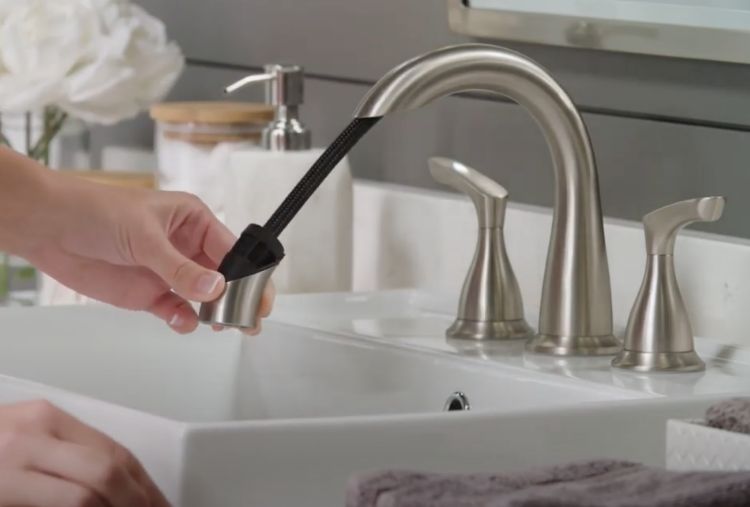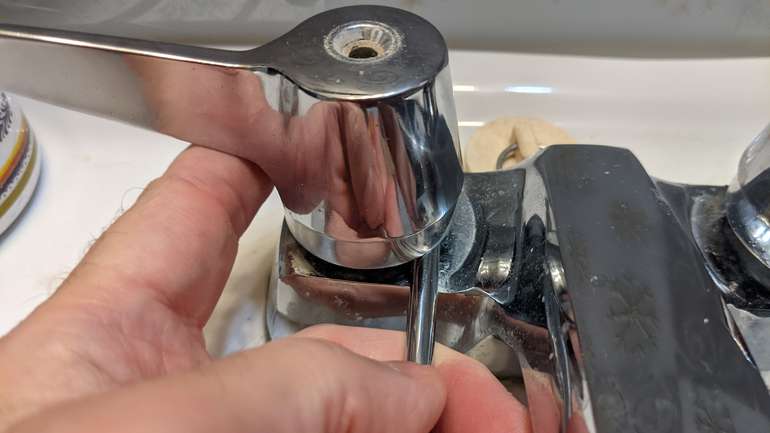Explanations Why It's Important to Repair a Faulty Faucet
Explanations Why It's Important to Repair a Faulty Faucet
Blog Article
What are your opinions regarding Leaky Faucets: Why They Happen & What to Do About Them?

Dripping taps may seem like a minor aggravation, yet their effect goes beyond simply the annoyance of the noise. From drainage to incurring unnecessary monetary expenses and wellness threats, ignoring a dripping faucet can result in different repercussions. In this post, we'll explore why it's critical to resolve this typical family problem quickly and efficiently.
Waste of Water
Environmental Impact
Trickling taps contribute considerably to water wastage. According to the Environmental Protection Agency (EPA), a solitary tap dripping at one drip per secondly can squander greater than 3,000 gallons of water annually. This not only pressures water sources but additionally impacts communities and wild animals based on them.
Step-by-Step Overview to Taking Care Of a Dripping Tap
Tools Needed
Prior to attempting to deal with a leaking tap, gather the needed devices, including a flexible wrench, screwdrivers, substitute parts (such as washing machines or cartridges), and plumber's tape.
Usual Faucet Issues and Their Solutions
Determine the sort of tap and the specific problem triggering the drip. Usual problems include worn-out washers, rusty shutoff seats, or damaged O-rings. Describe manufacturer instructions or online tutorials for step-by-step assistance on repairs.
Financial Costs
Enhanced Water Bills
Beyond the environmental impact, dripping taps can blow up water costs significantly. The collected waste in time translates right into greater energy expenditures, which might have been avoided with prompt fixings.
Prospective Home Damage
Moreover, long term leaking can lead to harm to fixtures and surface areas surrounding the tap. Water accumulation can trigger staining, rust, and also architectural issues if left ignored, resulting in additional repair work expenses.
Health Issues
Mold And Mildew and Mildew Growth
The constant existence of dampness from a dripping faucet produces an ideal environment for mold and mold development. These fungis not only compromise indoor air high quality however likewise position health and wellness threats, specifically for people with respiratory system problems or allergic reactions.
Waterborne Conditions
Stationary water in trickling taps can end up being a breeding ground for germs and other pathogens, raising the threat of waterborne diseases. Contaminants such as Legionella microorganisms prosper in stagnant water, potentially bring about severe diseases when ingested or breathed in.
DIY vs. Specialist Repair service
Advantages and disadvantages of DIY Fixing
While some may try to repair a trickling faucet themselves, do it yourself repair work feature their own collection of challenges. Without appropriate expertise and tools, do it yourself attempts can worsen the issue or cause insufficient repair work, lengthening the trouble.
Benefits of Employing a Specialist Plumber
Hiring an expert plumber makes certain that the underlying cause of the dripping faucet is attended to properly. Plumbings possess the knowledge and devices to identify and fix tap problems effectively, conserving time and lessening the danger of additional damages.
Environmental Obligation
Private Contribution to Conservation
Taking responsibility for fixing trickling taps lines up with more comprehensive efforts toward water conservation and environmental sustainability. Every person's actions collectively make a considerable impact on maintaining valuable resources.
Lasting Living Practices
By prioritizing prompt fixings and embracing water-saving habits, people contribute to lasting living practices that profit both present and future generations.
Preventive Measures
Regular Upkeep Tips
To stop trickling faucets, execute regular upkeep such as cleaning aerators, inspecting for leakages, and changing damaged components promptly. Additionally, think about setting up water-saving devices or upgrading to much more reliable components.
Value of Prompt Repair Works
Addressing trickling taps as soon as they're noticed protects against further water wastefulness and prospective damages, inevitably conserving both water and money over time.
Impact on Building Worth
Understanding of Well-Maintained Home
Maintaining a home in good condition, including resolving maintenance issues like leaking taps, enhances its regarded value and desirability among potential purchasers or tenants.
Impact on Resale Worth
Qualities with well-maintained plumbing components, consisting of faucets, command greater resale worths in the real estate market. Attending to dripping taps can add to a positive perception throughout property evaluations and settlements.
Verdict
Resolving a dripping faucet goes beyond simple comfort; it's a vital action toward saving water, lowering financial expenses, and securing wellness and residential or commercial property. Whether with do it yourself fixings or professional assistance, taking action to repair leaking taps is a little yet impactful method to advertise liable stewardship of sources and add to a much healthier, extra lasting future.
How to Fix a Leaky Faucet: Step-by-Step Repair Guide
A leaky faucet may seem like a simple annoyance, but if it's not fixed promptly, that leak could cost hundreds to potentially thousands. From water damage to mold, mildew, and high water bills, even a tiny leak can be catastrophic if left unattended. Damage like this can even affect the overall value of your home, so it's important to take the right approach for leaky faucet repair. You may need the help of a plumber in some cases, but we've got a few tips you can try on how to fix a leaky faucet before calling the pros.
Four Faucet Types
When you're learning how to fix a leaky faucet, the first step is knowing what kind of faucet you're working with! There are four common types.
Cartridge Faucets
Cartridge faucets come in one- or two-handled varieties. In one-handled cartridge faucets, hot and cold water combines in a single cartridge. In the two-handled versions, hot and cold water are controlled separately and mixed in the faucet.
Ball Faucets
Ball faucets have a single lever you push up and down to adjust the pressure and rotate to change the temperature. A slotted metal ball controls the amount of water allowed into the spout.
Compression Washer Faucets
They're the oldest type of faucet, but they're still used in many homes — especially older ones. Compression faucets have two separate handles that, when turned, raise or lower the washer that seals a water valve. This valve stops water from flowing through the faucet when it is turned off.
Disc Faucets
Disc faucets rarely need to be repaired due to their maintenance-free design. The water flow is controlled by two discs — the upper one raises and lowers against a fixed lower disc, creating a watertight seal. If your disc faucet starts leaking, you may need to replace the seals or clean residue buildup from the inlets.
Fixing a Leaky Faucet
Step 1: Turn Off the Water
Whether you're learning how to fix a leaky bathtub faucet or how to fix a leaky kitchen faucet, always turn off the water supply to your working area when you're fixing a leak. The last thing you want is a flood added to your list of things to fix.
Look for the shutoff valves below your sink or around the tub and turn them clockwise to stop the water flow. If your faucet doesn't have shutoff valves, you may need to turn off the water for the whole house. Check to make sure it's off by turning the faucet on. If nothing comes out, you're ready to start the repair.
Step 2: Take Apart the Faucet
How you disassemble your faucet depends on the type of fixture you have. You can use a flathead screwdriver to remove the caps on top of the handle or handles for cartridge and compression faucets. Inside, you should see handle screws. Unscrew these with a screwdriver to remove the handle.
Disc- and ball-style faucets will typically have an inlet screw near the handle, and removing that will reveal the interior of the faucet.
Detach the Valve Stem
For cartridge- and compression-style faucets, you'll see the inner valve stem or cartridge once you remove the faucet handles. If you have a compression faucet, unscrew the brass valve stem. If you have a cartridge faucet, pull out the cartridge. If your cartridge has been in place for a while, it may require some tools or extra force to remove it due to mineral deposits.
Examine and Replace Parts
Once you've removed the parts, check them out to confirm what needs to be replaced. You may see corroded rubber washers, O-rings, stems, or cartridges. On a ball-style faucet, check the seats and springs for damage.
If you need to repair a leaky disc faucet, check the inlet and seals on the lower disc.
Once you determine what parts must be replaced, visit your local hardware store. Bring the damaged parts with you to ensure you can purchase the correct components to replace them.
Clean Valves and Faucet Cavity
If you've removed a stem or cartridge, you may notice mineral buildup in the faucet's threads. Use white vinegar to clean the valve seat by soaking it for a few minutes, then scrub it away with a soft toothbrush and rinse with warm water. You can also clean the interior of the faucet in the same way.
Reassemble the Faucet
Once your faucet is cleaned and the required parts have been replaced, it's time to reassemble it. Put the pieces back together and slowly turn the water supply back on. Doing this slowly is crucial because too much initial water pressure can damage the new hardware you've just installed.
https://homewarranty.firstam.com/blog/how-to-fix-leaky-faucet

I am very excited about What Causes Leaky Faucets & How To Fix Them and I really hope you liked the new blog entry. Those who liked our blog posting if you please consider to share it. Thanks for being here. Come back soon.
Report this page